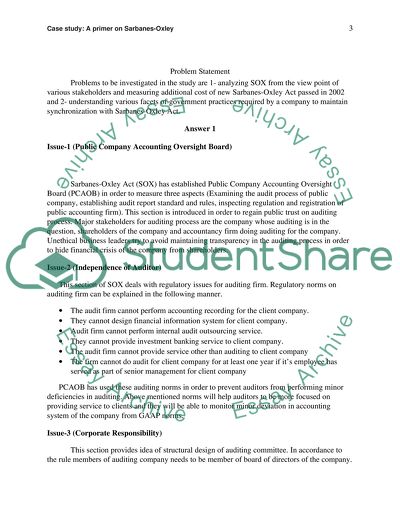Cite this document
(Sarbanes-Oxley Act Assignment Example | Topics and Well Written Essays - 1750 words, n.d.)
Sarbanes-Oxley Act Assignment Example | Topics and Well Written Essays - 1750 words. Retrieved from https://studentshare.org/law/1458378-case-study-a-primer-on-sarbanes-oxley
Sarbanes-Oxley Act Assignment Example | Topics and Well Written Essays - 1750 words. Retrieved from https://studentshare.org/law/1458378-case-study-a-primer-on-sarbanes-oxley
(Sarbanes-Oxley Act Assignment Example | Topics and Well Written Essays - 1750 Words)
Sarbanes-Oxley Act Assignment Example | Topics and Well Written Essays - 1750 Words. https://studentshare.org/law/1458378-case-study-a-primer-on-sarbanes-oxley.
Sarbanes-Oxley Act Assignment Example | Topics and Well Written Essays - 1750 Words. https://studentshare.org/law/1458378-case-study-a-primer-on-sarbanes-oxley.
“Sarbanes-Oxley Act Assignment Example | Topics and Well Written Essays - 1750 Words”, n.d. https://studentshare.org/law/1458378-case-study-a-primer-on-sarbanes-oxley.


